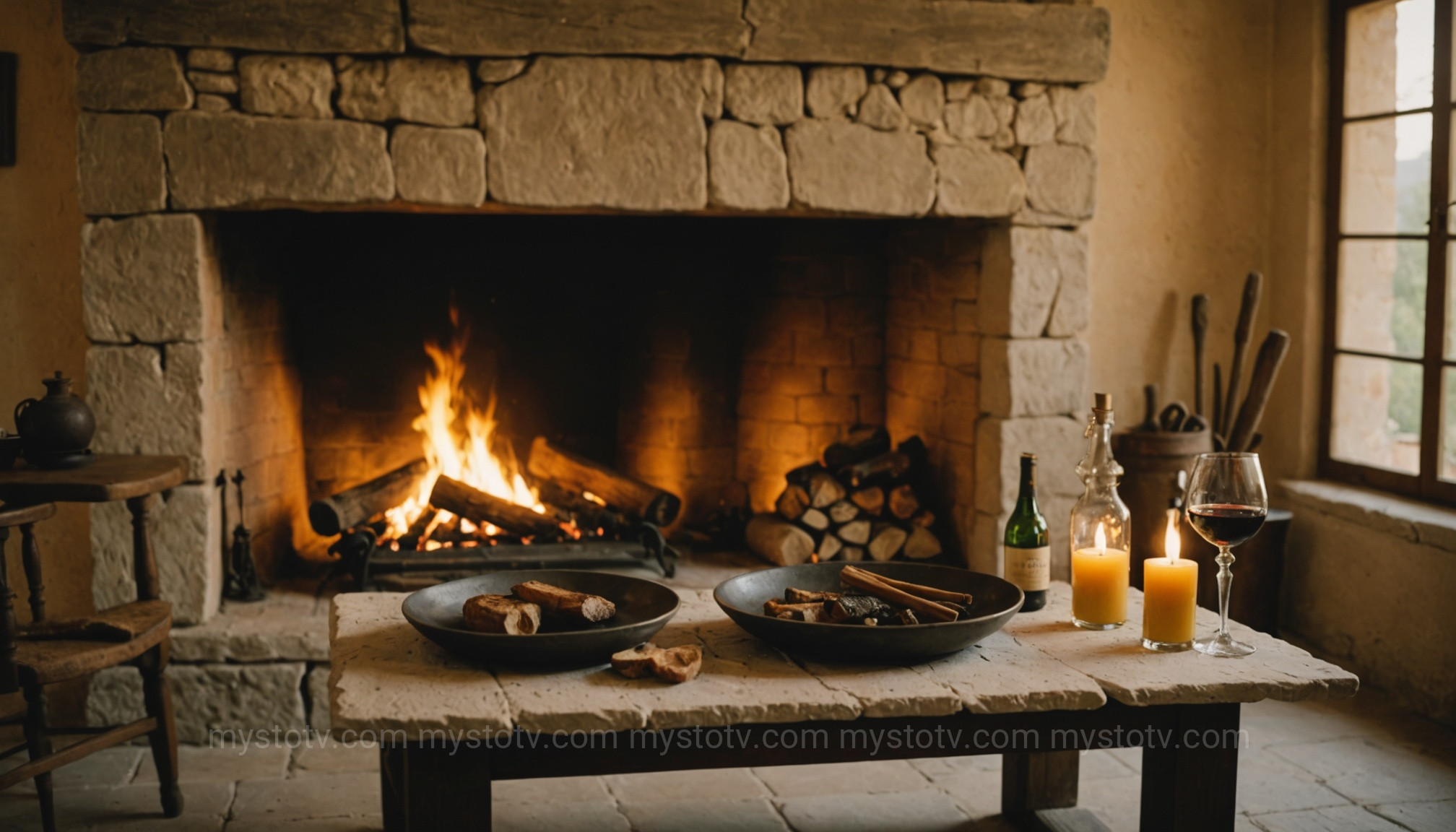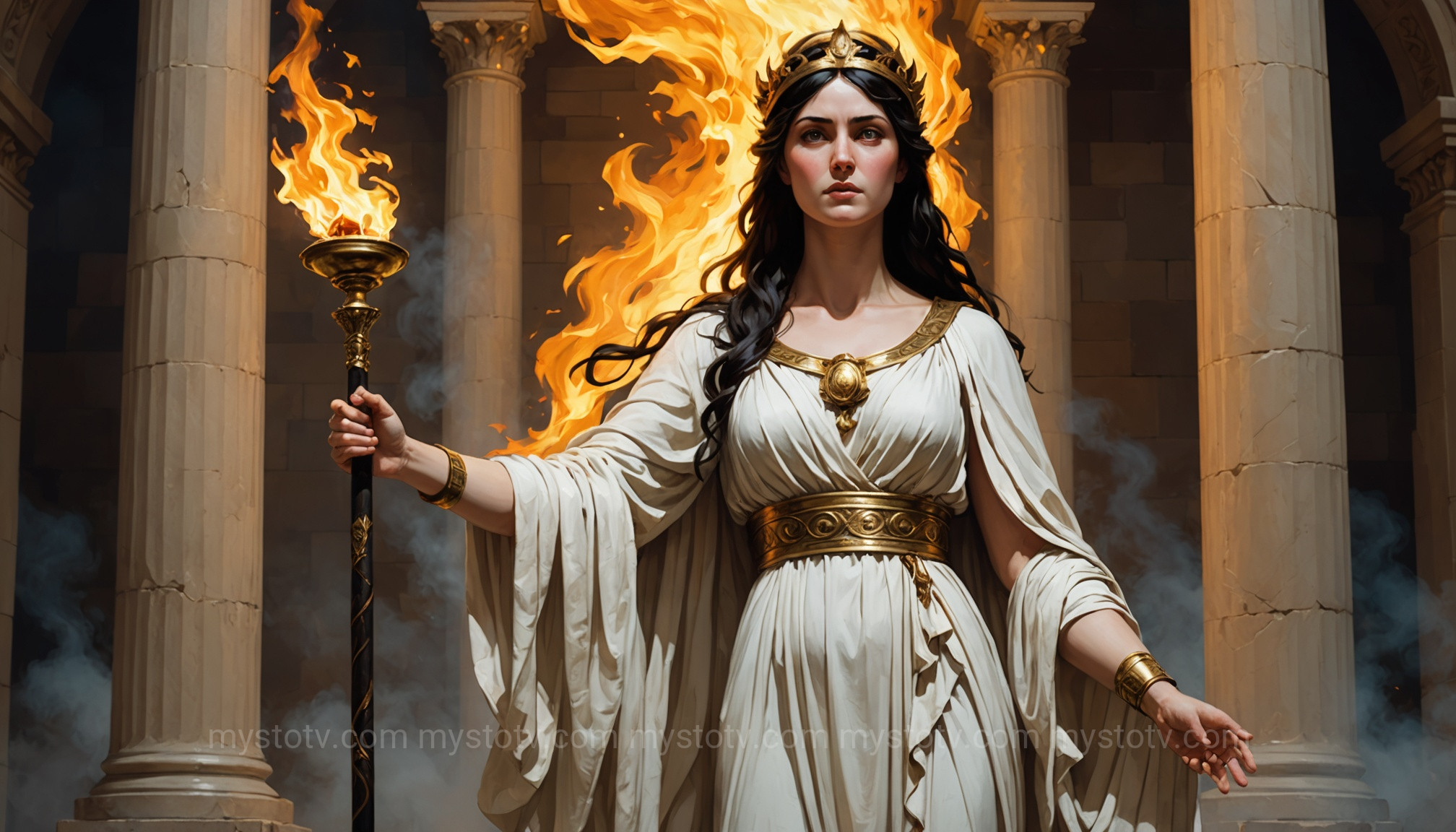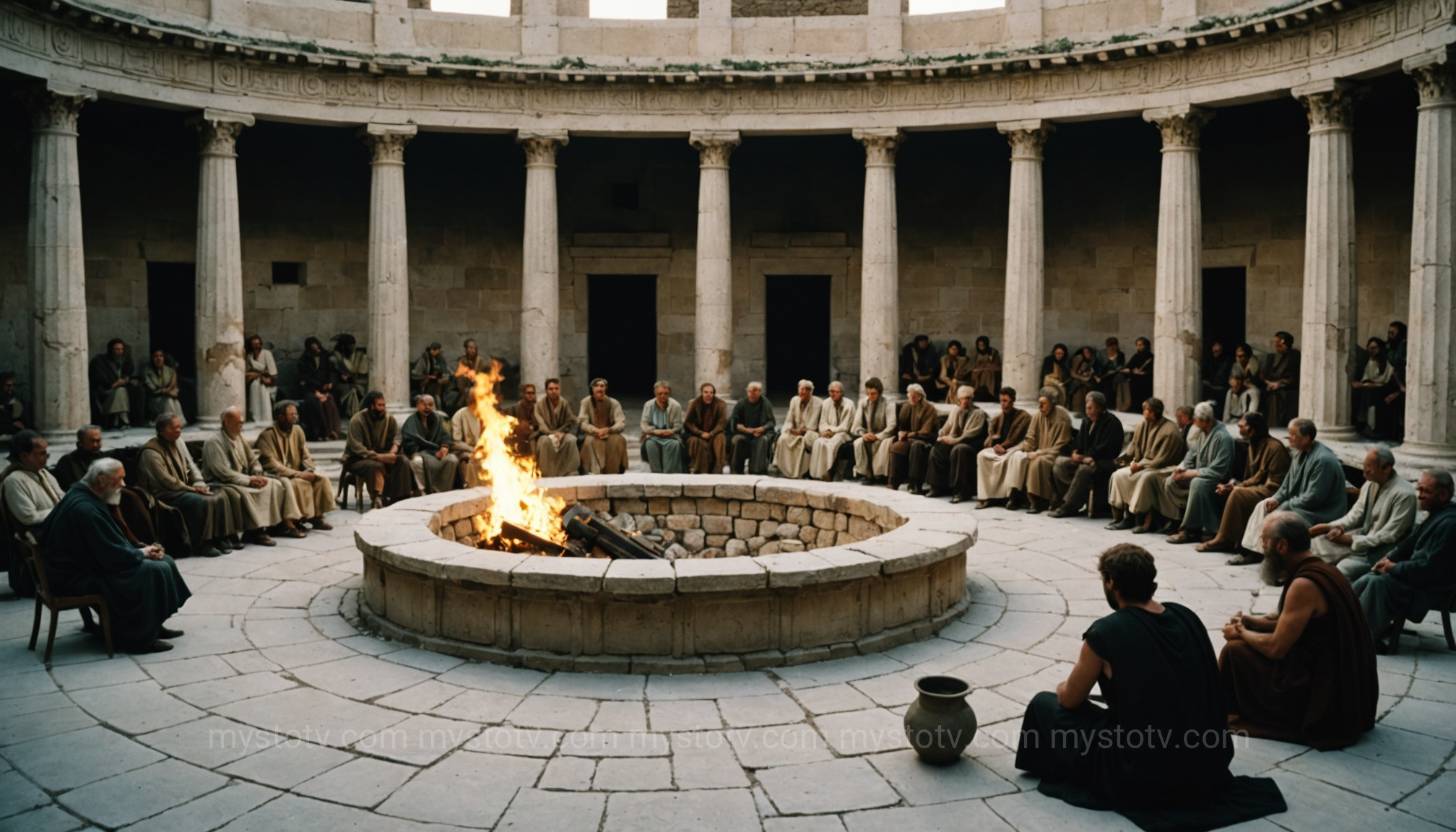There’s a certain feeling that settles in when you return home after a long day. It’s not just the closing of a door; it’s the sigh of relief, the warmth of a familiar space, and the quiet comfort of sanctuary. For years, I took this feeling for granted, attributing it to good lighting or a comfortable couch. It wasn't until I stumbled upon a lesser-known figure in Greek mythology that I found a name for this profound sense of belonging: Hestia. In a pantheon filled with dramatic gods of war, sea, and sky, the question of who is Hestia goddess of often gets overlooked. Yet, she represents something more fundamental and enduring—the very heart of our homes and communities. She is the quiet flame that is always there, often forgotten but essential for warmth and life.
Contents
- 1 Unveiling the Answer: So, Who is Hestia, Goddess Of?
- 2 The Origins and Mythology of Hestia: Exploring Who is Hestia, Goddess Of in Ancient Tales
- 3 The Sacred Flame: Understanding Who is Hestia, Goddess Of Through Her Symbols and Worship
- 4 Why is She the 'Forgotten' Goddess? An Analysis of Who is Hestia, Goddess Of in a Modern Context
- 5 Hestia's Enduring Legacy: How the Answer to 'Who is Hestia, Goddess Of?' Resonates Today
- 6 Frequently Asked Questions
- 7 Conclusion
- 8 References
Unveiling the Answer: So, Who is Hestia, Goddess Of?

At its core, the answer to 'who is Hestia goddess of?' is deceptively simple: Hestia is the Greek goddess of the hearth, the home, and the family. She is the divine personification of the fire that burns in the center of every household, a flame that was the focal point for domestic life. This wasn't just any fire for cooking or warmth; it was a sacred entity. It was the center for family rituals, the place where guests were welcomed, and the symbol of the home's continuity and stability. Her domain extended from the private hearth of an individual family to the public hearth of the city-state, making her a goddess of both personal sanctuary and civic unity.
Unlike her Olympian siblings, whose powers were demonstrated through thunderbolts, raging seas, or strategic warfare, Hestia’s influence was subtle, internal, and foundational. She represents the social, religious, and political fabric that holds a family—and by extension, a community—together. To understand Hestia is to understand that the ancient Greeks viewed the home not merely as a shelter, but as a sacred space, an altar in its own right, with Hestia as its gentle, unwavering guardian. She was the first and the last, a concept we will explore, symbolizing the beginning and end of all important domestic and civic occasions.
The Origins and Mythology of Hestia: Exploring Who is Hestia, Goddess Of in Ancient Tales
To truly grasp the essence of who is Hestia, goddess of, we must look at her place within the Greek pantheon. Her mythology, or relative lack thereof, is key to understanding her character and significance. She was not a goddess of grand adventures or dramatic conflicts, but her story is one of profound principle and quiet strength.
Firstborn of the Olympians
Hestia was the firstborn child of the Titans Cronus and Rhea. This lineage made her the eldest sister of Zeus, Poseidon, Hades, Hera, and Demeter. According to the myth, her father Cronus, fearing a prophecy that one of his children would overthrow him, swallowed each of them as they were born. Hestia was the first to be consumed. Later, when Zeus forced Cronus to regurgitate his siblings, Hestia was the last to be brought back into the world. This narrative arc makes her both the eldest and the youngest of the original six Olympians.
This "first and last" status was deeply symbolic. It earned her the right to receive the first part of every sacrifice in the home. Before any meal or ritual, the first offering was poured out to Hestia, and she was invoked last at the conclusion of the ceremony. This practice cemented her role as the alpha and omega of domestic life—the goddess who presided over the beginning and end of all important family matters.
The Vow of Eternal Virginity

As one of the twelve Olympians, Hestia’s beauty caught the attention of other gods, most notably Poseidon and Apollo, who both sought her hand in marriage. To avoid the conflict and political entanglements that such a union would cause among the gods, Hestia made a solemn vow. She swore upon the head of Zeus, the most binding oath possible, to remain an eternal virgin and dedicate herself to her duties. Zeus, respecting her decision, granted her a place of honor—the center of the home and the richest portion of all sacrifices. This story is crucial to understanding who is Hestia, goddess of. She is the goddess of stability, and by rejecting marriage, she removed herself from the soap operas of jealousy, power plays, and disputes that defined so many other Olympian myths. Her purity ensured the purity and impartiality of the hearth she protected.
A Different Kind of Power
In some traditions, Hestia willingly gave up her seat among the twelve Olympians on Mount Olympus in favor of Dionysus, the god of wine and revelry. This act wasn't one of weakness but of choice, reflecting her character. She preferred the quiet, stable center of the mortal world—the hearth—over the chaotic politics of the divine court. Her power wasn't about ruling over others but about creating the foundation upon which everything else could be built. Without the stability of the home and community (Hestia's domain), the domains of the other gods—war, wisdom, the sea—would lack a coherent society to influence.
The Sacred Flame: Understanding Who is Hestia, Goddess Of Through Her Symbols and Worship
Hestia was rarely depicted in human form in ancient art. Instead, she was embodied by her primary symbol: the sacred flame itself. The way she was worshipped reveals more about who is Hestia, goddess of than any grand myth. Her temple was not a building of marble and gold, but every single home and city hall.
The Hearth in the Home (Oikos)
The Greek household, or oikos, was organized around the hearth. This central fire was never supposed to be extinguished. When a daughter married, her mother would carry a flame from the family hearth to light the fire in her new home, ensuring a symbolic continuity of the family line and Hestia’s blessing. The hearth was also a place of asylum. A stranger or supplicant who reached the hearth of a home was considered under Hestia’s protection and had to be treated with respect and offered hospitality.
The Public Hearth (Prytaneum)

This concept extended to the community. Each Greek city-state (polis) had a public hearth in its central administrative building, the Prytaneum. This hearth held a perpetual flame, tended by the state, that symbolized the life, health, and unity of the entire community. When citizens left to establish a new colony, they would carry a flame from the mother city's public hearth to light the fire in the new settlement. This act linked the new colony directly back to its origins, creating a network of communities all connected by Hestia’s sacred fire. This shows that the answer to 'who is Hestia goddess of?' encompasses not just the family, but the very idea of a unified society.
Why is She the 'Forgotten' Goddess? An Analysis of Who is Hestia, Goddess Of in a Modern Context
Despite her supreme importance in daily Greek life, Hestia is arguably the least known of the major Olympians today. Understanding why helps us reflect on our own modern values. The reasons for her obscurity are directly tied to the qualities that define who is Hestia, goddess of.
The primary reason is her lack of a dramatic narrative. Greek mythology, as it has been passed down to us, thrives on conflict, romance, betrayal, and adventure. Zeus has his affairs, Poseidon his tempests, and Ares his battles. Hestia, by her very nature, is stable, constant, and peaceful. She does not participate in the Trojan War, challenge other gods, or have tragic love affairs. She simply is—a fixed point of serenity in a chaotic universe. While this made her essential, it didn't make for exciting storytelling.
Furthermore, our modern world often celebrates the external over the internal. We value action, ambition, and public achievement—the domains of gods like Athena, Apollo, and Zeus. Hestia represents the domestic, the internal, and the foundational. Her work is the quiet, often invisible labor of maintaining a home and community. As societies have shifted focus from the hearth to the forum, from the home to the workplace, the goddess who represents that foundational domestic sphere has faded into the background. Yet, the need for what she represents has never been greater.
Hestia's Enduring Legacy: How the Answer to 'Who is Hestia, Goddess Of?' Resonates Today

Though she may be forgotten, the principles Hestia embodies are timeless. The question 'who is Hestia goddess of?' is not just a matter of ancient history; it speaks to a deep human need for sanctuary, belonging, and community. In our fast-paced, often isolating world, the concept of Hestia is a powerful reminder of the importance of home—not as a piece of real estate, but as a center of emotional warmth and stability. She represents the conscious effort it takes to build a welcoming space, to practice hospitality, and to foster strong family and community bonds.
Every time we prioritize family dinner, welcome a friend into our home, or contribute to our local community, we are honoring the spirit of Hestia. She is present in the act of creating a safe space for our loved ones and in the quiet rituals that bind us together. While her name may not be on the tip of our tongues, her essence is woven into the very fabric of a well-lived life. She is the architecture of our inner peace and the foundation of our connections to others. Her role as the center of the home was paramount to Greek life and remains a powerful metaphor today.
Frequently Asked Questions
To provide further clarity, here are answers to some common questions that arise when exploring who is Hestia, goddess of.
1. What is Hestia's Roman name?
Hestia's Roman equivalent is Vesta. The parallels are extremely strong. Vesta was also the goddess of the hearth, home, and family. The state-sponsored Vestal Virgins in Rome tended a sacred, perpetual flame in her temple, a practice directly mirroring the worship of Hestia in the Greek prytaneum.
2. Did Hestia have any temples?
While Hestia generally did not have the large, public temples dedicated to other gods like Zeus or Athena, this was because her "temple" was considered to be every home and city hall. The hearth itself was her altar. However, some sources do mention that she had small, dedicated temples in certain locations, though they were far less common.
3. Who were Hestia's siblings?
Hestia was the oldest of the six original Olympian gods born to Cronus and Rhea. Her five younger siblings were Hades (god of the Underworld), Demeter (goddess of the harvest), Poseidon (god of the sea), Hera (goddess of marriage), and Zeus (king of the gods).
Conclusion
In the end, the question of who is Hestia goddess of leads us to the quiet center of human civilization. She is not a deity of grand pronouncements but of steady presence. She is the goddess of the hearth, home, family, and the civic unity that springs from it. Though often overshadowed by her more dramatic relatives in the Greek pantheon, her role was arguably one of the most vital. Hestia reminds us that before there can be adventure, art, or ambition, there must first be a safe, warm place to call home. She is the forgotten goddess whose presence we feel every time we find sanctuary in our personal spaces and community, a timeless symbol of peace, stability, and the sacred fire within.
References
- Homer. The Homeric Hymns. "Hymn 5 to Aphrodite" and "Hymn 24 to Hestia". (c. 7th-4th century BCE).
- Atsma, Aaron J. "Hestia." Theoi Project, 2017.
- Cartwright, Mark. "Hestia." World History Encyclopedia, 16 January 2013. https://www.worldhistory.org/Hestia/
- Burkert, Walter. Greek Religion. Harvard University Press, 1985.